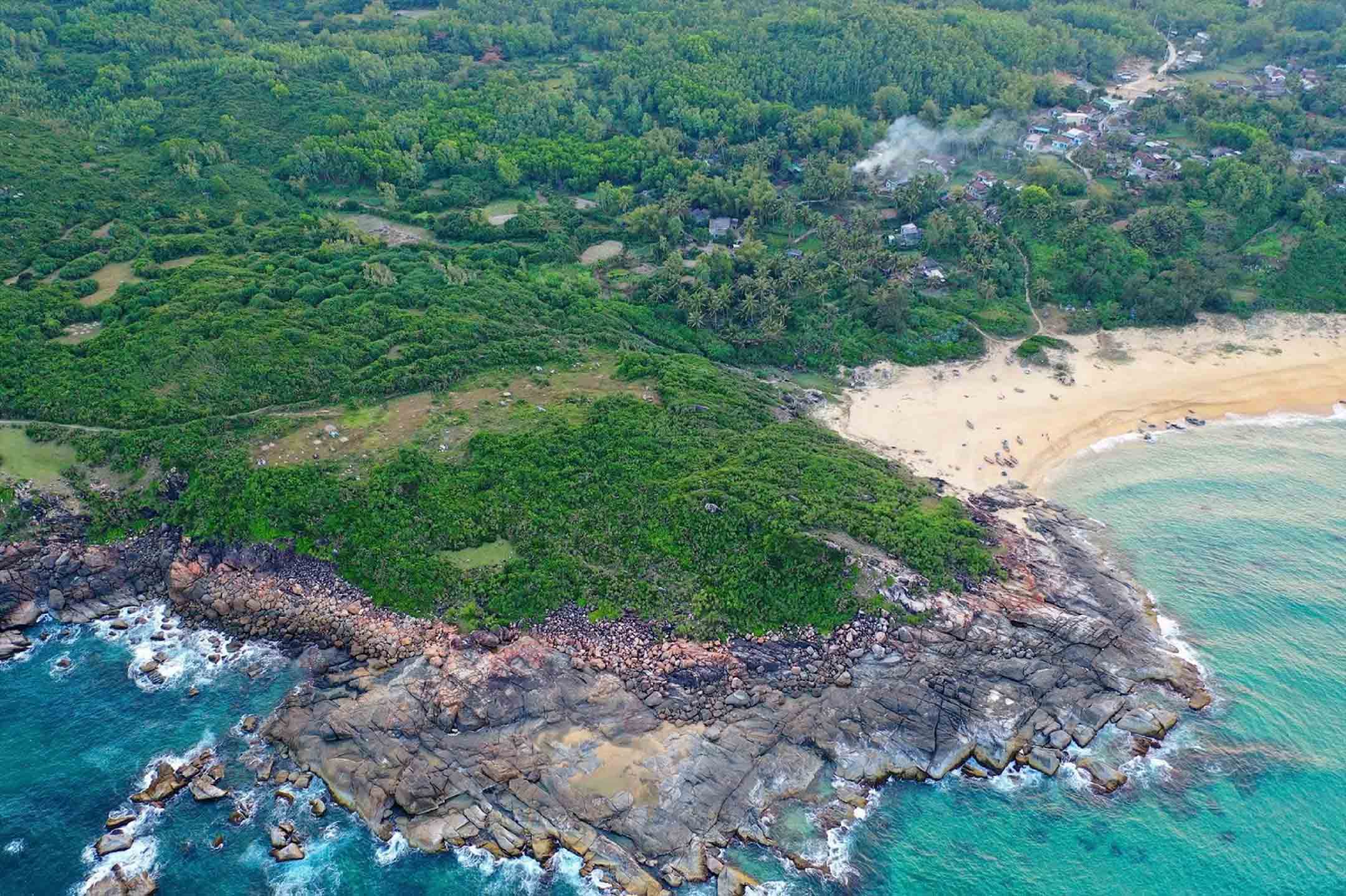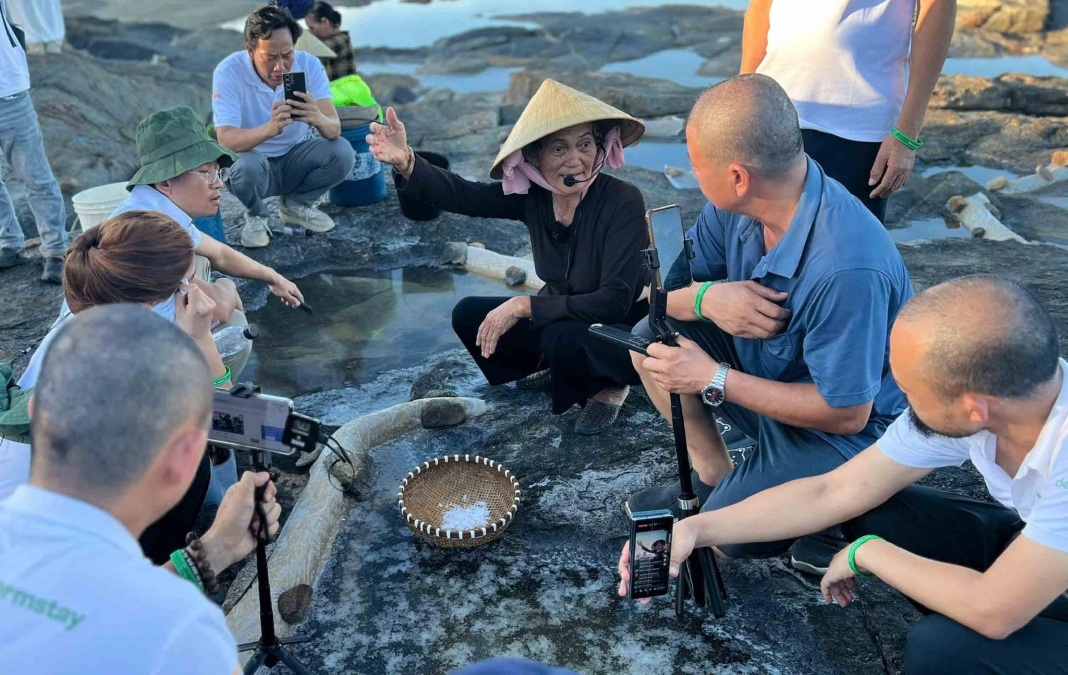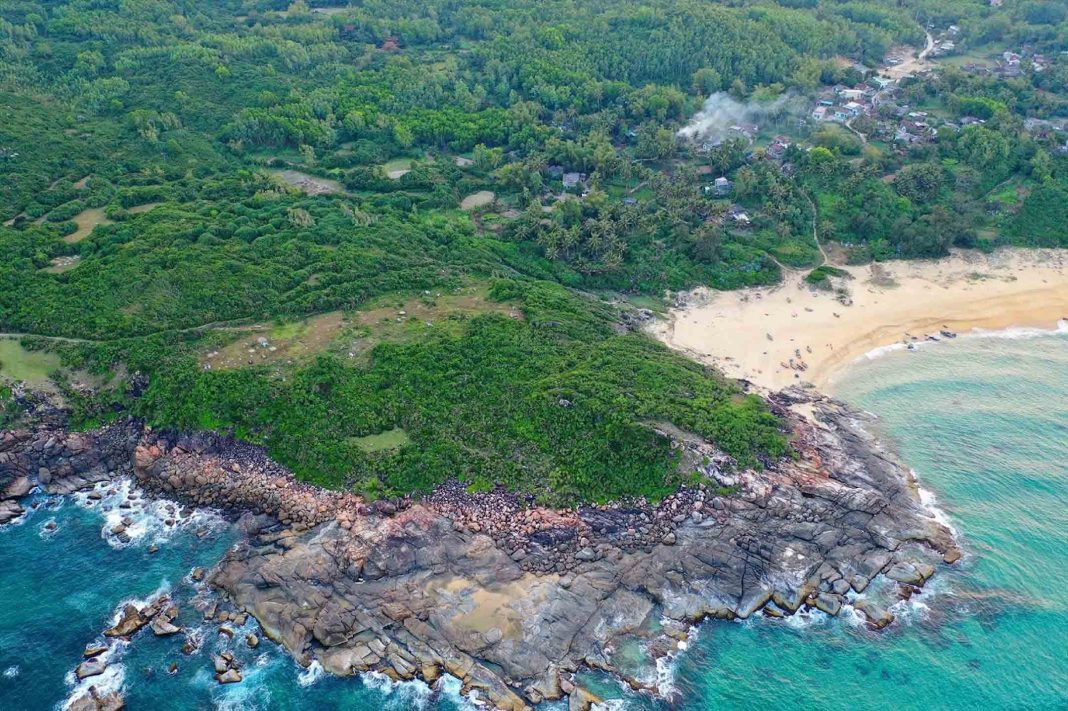Located on the coastal hills of Sa Huynh, the ancient fishing village of Go Co is gaining attention as a model of community-based tourism that preserves cultural heritage while creating livelihoods for local residents.
The village offers a quiet, untouched setting that feels far removed from city life. With simple thatched-roof houses and earthen walls, it holds layers of history dating back 2,500 to 3,000 years from the Sa Huynh culture, through the Champa kingdom, to Dai Viet settlers. Daily life still revolves around fishing, farming, and salt making, traditions passed down through generations. On the sandy shore, a few residents weave fishing nets in preparation for their next trip to sea.

The establishment of the Go Co village community tourism cooperative has turned fishermen, farmers, and salt workers into homestay owners, guides, and performers of traditional “bài chòi” folk games. Instead of restaurants, visitors share family meals, experiencing local dishes prepared with available ingredients such as fresh seafood, vegetables, or cassava.
Villagers continue to maintain their homes using traditional methods, rebuilding earthen walls and thatched roofs while tending to gardens and hedges. Some families have even created small museums to preserve cultural artifacts.
Despite investment offers from outside developers, residents say they want to keep their homes and land as ancestral heritage rather than commercial property. “Here, people don’t compete but share so everyone benefits,” one villager said.

Go Co’s landscape is defined by stone formations estimated to be 400 million years old. Stone is found everywhere: in village pathways, fences, terraced fields, and ancient wells. Nearly a dozen stone wells are still in use today, supplying fresh water.
The village is also renowned for its traditional salt-making on stone beds, a craft that dates back to the Sa Huynh and Champa periods. Unlike industrial production, the salt here is made in small quantities and regarded as a cultural legacy rather than a commodity. It is not only sold but also given as a symbolic gift, carrying human warmth and profound cultural meaning.
Local authorities report that 90% of tourism revenue is distributed directly to households, with the remainder allocated to public services and community management. The government plans to develop Go Co into a model of cooperation among researchers, authorities, businesses, and the community.

In 2025, Go Co will represent Vietnam as one of six villages nominated for the “Best Tourism Villages” award by UN Tourism.
With its cultural depth, natural setting, and commitment to sustainability, Go Co offers visitors both a retreat from urban life and insight into how rural communities can thrive through heritage-based tourism.










